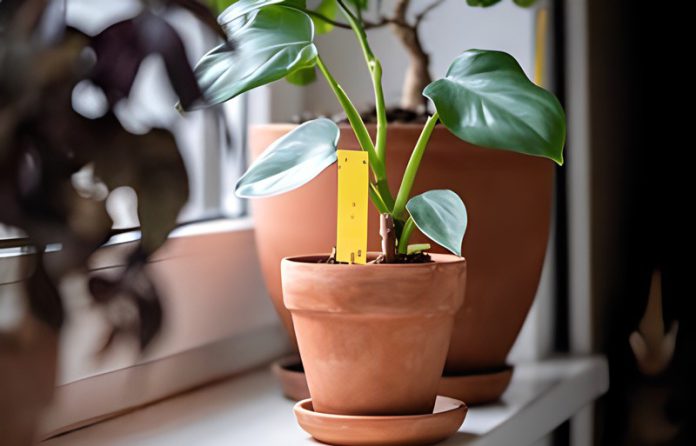Have you ever heard footsteps moving in the middle of the night and discovered an anthill leading to your kitchen? Have you found your wooden furniture in ruins due to a termite infestation? As a homeowner, I have experience with how annoying and disturbing pests can be. Previously, the only way to eliminate these unwelcome visitors was to use dangerous poisons. However, as people become more aware of the risks associated with chemicals, more are choosing environmentally friendly pest control methods. These alternatives are safer for the environment and our family, in addition to being equally effective. The significance of environmentally friendly pest control methods and their beneficial effects on making a healthier and greener house will be discussed in this article.
What is Eco-friendly Pest Control?
Eco-friendly pest control is centered on a complete approach that minimizes damage to ecosystems through sustainable and ecologically friendly methods of managing and getting rid of pests. Eco-friendly alternatives to standard pest management methods prioritize natural, non-toxic remedies instead of chemical pesticides that adversely affect the environment. These strategies cover several activities, such as using Integrated Pest Management (IPM) techniques and using beneficial insects, herbs, and essential oils. Using environmentally friendly pest control techniques helps people live in peace with the environment and in a healthier world by reducing the ecological footprint of pest management and promoting human-environment coexistence.
Here is an overview of some eco-friendly pest control methods:
- Physical removal: This entails taking out pests from the impacted region by hand.
- Traps: Without dangerous chemicals, traps can be used to catch pests.
- Sealing off entry points is part of “proofing” your property to keep pests out.
- Heat treatments: Without pesticides, heat can eradicate pests like bed bugs.
- Microbial insecticides: These are manufactured from microorganisms that are poisonous to pests but harmless to humans and the environment.
- Natural predators: Predators like ladybugs and lacewings can aid in managing pest populations.
- Diatomaceous earth (DE) is a naturally occurring, non-toxic material formed from the preserved remnants of microscopic aquatic life. Ants and cockroaches are a couple of the pests it can eradicate.
Why Choose Eco-Friendly Pest Control?
Selecting environmentally friendly pest management is a proactive move motivated by sustainability, health, and environmental factors. First and foremost, eco-friendly techniques minimize the adverse effects on ecosystems, water sources, and non-target creatures by favoring natural alternatives over chemical pesticides.
Safer living conditions for people and animals are promoted by substituting natural insecticides for chemical ones, preventing ecosystem harm. The approach, which emphasizes long-term repairs that lessen reliance on hazardous chemicals, supports sustainability goals. An eco-friendly approach to pest control shows a dedication to protecting the environment, maintaining public health, and building a sustainable future.
Eco-friendly Pest Control Solutions
A. Natural Pest Repellents
- Essential Oils and Herbs: Nature provides us with a plethora of plants that possess natural repellent properties. Pests can be effectively deterred by essential oils derived from herbs like citronella, peppermint, and lavender. These oils give your house a pleasing scent while keeping pests away.
- DIY Repellent Recipes: Creating your pest repellents at home is cost-effective and allows customization based on specific pest issues. Pests can be successfully repelled with easy formulations that combine essential oils, water, and a small amount of natural soap. We’ll look at several simple DIY repellent recipes that work for various pests frequently seen in homes.
B. Biological Pest Control
- Introduction to Beneficial Insects: Nature has its own set of pest control agents – beneficial insects. Natural predators such as praying mantises, spiders, and ladybugs aid in controlling pest populations. An environmentally responsible and sustainable approach to managing pests in your garden or house is to recognize and welcome the presence of these beneficial organisms.
- Using Predators to Control Pest Populations: Implementing biological pest control involves creating an environment where natural predators thrive. This section will discuss ways to attract and maintain these beneficial insects to create a healthy ecology and reduce the need for chemical intervention. Biodiversity’s role in preserving a robust and self-sufficient pest management system will also be covered.
C. Sustainable Practices in Pest Management
- Integrated Pest Management (IPM): Integrated Pest Management is a holistic approach combining multiple strategies to manage pest populations effectively. This section will cover the three pillars of IPM—monitoring, prevention, and intervention—in detail. Homeowners can drastically lessen their need for chemical pesticides by implementing an integrated pest management (IPM) strategy and focusing more on long-term, sustainable solutions.
- Proper Waste Disposal to Minimize Attractants: Pests are often drawn to improperly managed waste. The attractiveness of your home to pests can be significantly reduced with easy yet effective waste management practices, creating a cleaner and healthier living space.
Benefits of Eco-Friendly Pest Control
- Reduced Environmental Impact: Traditional pest control methods often involve the use of harsh chemicals, which can have detrimental effects on ecosystems. These substances have the potential to contaminate air, water, and soil, harming the ecosystem over time. On the other hand, eco-friendly pest management methods put less stress on the environment by using sustainable and natural methods.
- Healthier Living Spaces for Humans and Pets: Many chemical pesticides used in traditional pest control can pose health risks to humans and pets. More severe health ailments, skin irritations, or breathing problems could arise from exposure to these toxins. Reduced dangers mean a safer living environment for humans and their canine friends when choosing eco-friendly options.
Conclusion
Eco-friendly pest control practices are crucial for maintaining a safe and sustainable home environment. Homeowners can effectively control pests by implementing integrated pest management strategies, using natural remedies, selecting organic products, managing their waste properly, and selecting environmentally friendly pest control services while reducing their adverse effects on the ecosystem and public health. Embracing these eco-friendly measures not only assures a better living space but also adds to the overall well-being of our planet.















